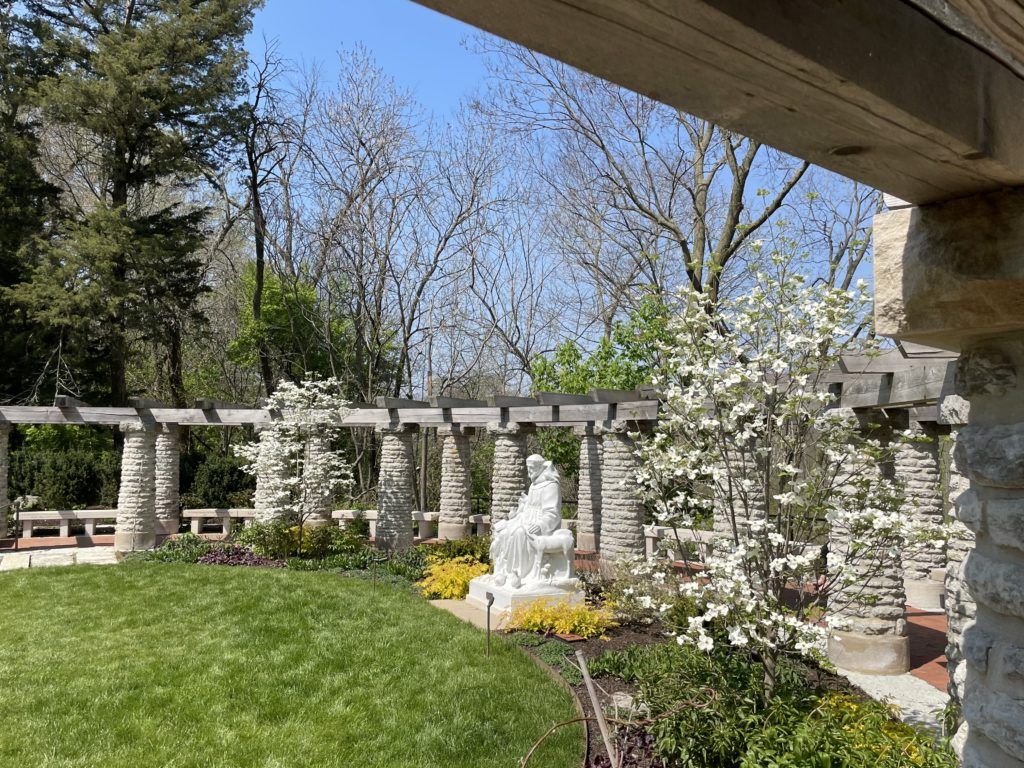
Celebrating Riverdale Garden — A Marian University Masterpiece
In celebration of World Landscape Architecture Month (WLAM), we are highlighting a unique and special landscape architectural restoration project for us: the Riverdale Garden. The gardens are part of Riverdale, formerly the estate of James Allison and family and now a part of Marian University.
Jens Jensen (1860 – 1951), the well-known naturalist landscape architect, created the original master plan for the Riverdale Estate in 1911. Jens Jensen was known for his approach to using native plant material and sensitivity to local ecologies, along with design work with automotive mogul’s estates, and Chicago public parks. Riverdale is one of only a few Jensen-designed master plans in Indianapolis, with only about 10 gardens, out of hundreds, remaining in the country.
Unfortunately, as time went on, the garden fell into despair. The master plan was rediscovered in the late 1990’s and an interested care-taking group called the “Friends of Riverdale” was created to raise funds to bring the once beautiful garden back to life.
Many of Jensen’s design philosophies, “design moves if you will” can be found in the Riverdale Gardens. To highlight a few —
- The fountain was fully rebuilt to its original size of 20’ diameter and has a large bowl in the center. A new pump and filter system was installed. Crushed stone walks, and plant beds radiate from the center and benches allow rest and visual enjoyment.
- The restored half circle stone and wood pergola is meant to be a contemplative perch to view across the lowland ponds and prairie landscape. This structure is thought to be the only covered “Council Ring” designed by Jensen. Today’s view is out over the area known as the Nina Mason Pulliam Eco-Lab, a part of the 60-plus acre original plan.
- Various vertical layers and scales of plants create “rooms” that can be used as a progression to entertainment. The lawn panel next to the mansion’s aviary is a pre-function space today used for graduation receptions. The next level creates a cross-axis anchored by the formal fountain gardens on one end and the other the St. Francis Colonnade. The last space is a player’s green set for theater. While historic pictures exist, the fully planted garden today is believed to be the first time it will be experienced by those alive today.

Deb Lawrence, Senior Vice President for Strategic Partnership and General Counsel at Marian University reached out to Barth Hendrickson, ASLA, Browning Day Principal and Executive Vice President, after she had learned Barth admired Jensen’s work.
Barth led the University through a decade-long restoration, using Jens Jensen’s original 1911 drawings, and a 2003 Cultural Landscape Report authored by David Roth ASLA.
“The opportunity to participate in the restoration of Riverdale has been a true honor. Getting to know Jensen more personally through these gardens gives us insight into a man that believed in stewarding the land and using material available to the location. Combining the honesty of native plant species, stone, brick, wood, and wrought iron in a manner intended to elevate the human experience was Jensen’s purpose. At Riverdale, he enhanced all of his core design moves; that is to be respected and was carefully restored to today’s standards of accessibility and sustainability,” said Barth Hendrickson.
Browning Day’s Landscape Architecture studio worked closely with the Friends of Riverdale, financial contributors, leadership at Marian University, Malcolm Cairns ASLA at Ball State University, David Roth ASLA, Kevin Parson ASLA, John Lapp ASLA. We wish to also recognize all the education and landscape architecture professionals, historians, and most notably the Sisters of Francis-Oldenburg who all contributed information and support leading to the restoration plan.
Indiana Landmarks recognized this project as one of Indianapolis’ most hidden treasures, and in 2019, Riverdale Gardens was awarded Central Indiana Preservation’s Outstanding Restoration Award.